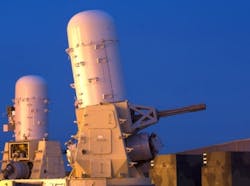Northrop Grumman to provide BAMS UAV with autonomous capability to sense and avoid other aircraft
UAV systems designers are putting substantial time, money, and energy to enable UAVs to sense and avoid other aircraft so they can operate safely alongside commercial and general-aviation aircraft in civil controlled airspace.
With this kind of UAV sense and avoid capability, if certified by the U.S. Federal Aviation Administration (FAA), UAVs such as BAMS not only could fulfill military surveillance and reconnaissance missions in war zones and outside of civil controlled airspace, but they also might be able to handle surveillance in and around large cities with complicated, congested airspace, as well as near sensitive border areas.
On this contract, Northrop Grumman will do the work in Bethpage, N.Y., and in San Diego, and should be finished by November 2012. Awarding the contract were officials of the U.S. Naval Air Systems Command at Patuxent River Naval Air Station, Md.
For more information contact Northrop Grumman Aerospace online at www.as.northropgrumman.com, or Naval Air Systems Command at www.navair.navy.mil.
